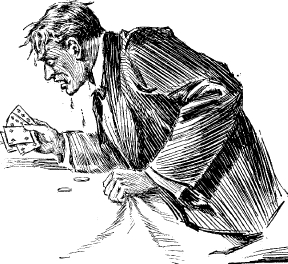Laws of Thermodynamics and Entropy
There are four laws of thermodynamics, beginning with the zeroth law. This law states deals with thermal equilibrium; it states that if one object is in equilibrium with another object, and that object is in equilibrium with a third object, then the first and third objects must also be in equilibrium with each other. This law enables us to build thermometers by allowing the length of one mercury column to serve as a measure to compare the temperature of the other two objects (Taftan Data, 1998, online).
The First Law of Thermodynamics restates the Law of Conservation of Energy (Zitzewitz,1995, pg. 256). It states that energy can be neither created nor destroyed, only transferred. Because of this, the total energy output of a system is equal to the amount of heat supplied, and since energy canít be created or destroyed, the sum of mass and energy is always conserved (Encarta,1998, pg. 135). The total amount of energy and matter in the universe always stays the same, it only changes from one form to another.
The Second Law of Thermodynamics deals with entropy. Entropy is a term first used by physicist Sadi Carnot in themid-seventeenth century to measure the disorder of a system (Farabee, 2001,online). This law states that in all energy exchanges, if no energy enters of leaves the system, the potential energy of this system will always be less than that of the initial state of the system. In other words, if a machine does work and converts energy from one form to another, some of it will always be lost. No machine can be completely efficient, and once the energy is gone it can never be recovered. The best anyone can hope for is to lose as little energy as possible. Carnotd iscovered this while trying to design a 100% efficient machine; instead of creating such a machine, he discovered that it can never exist (Riggins, 2001,online). The universe has a tendency towards entropy and does not order itself without some work being done. For example, the glass in a broken window will never repair itself; a stopped watch will not run again until someone rewinds it; even a relationship will deteriorate if work is not put into it. Even though we build machines to do work and temporarily reduce entropy, since some energy is always lost, the Second Law shows the ultimately, the universe is moving towards complete disorder. In the words of R.J. Riggins,ďentropy wins when organisms cease to take in energy and dieĒ (Riggins, 2001,online).
The Third Law of Thermodynamics is related to the Second Law. It states that it is impossible to cool a body to absolute zeroin a restricted number of steps. It can be approached arbitrarily closely, but can never be reached (Encarta, 1998, pg.135). This is because a body at absolute zero could only exist in one possible state, which would possess a definite energy. This state would have zero entropy.
 A good way to look at the Laws of Thermodynamics is to compare it to poker: the player can never win because energy canít be created or destroyed, so he canít get something for nothing. Neither can he break even because when energy is converted from one form to another, some will always be lost. And finally, he canít even get out of the game, because absolute zero is unattainable.
Home
A good way to look at the Laws of Thermodynamics is to compare it to poker: the player can never win because energy canít be created or destroyed, so he canít get something for nothing. Neither can he break even because when energy is converted from one form to another, some will always be lost. And finally, he canít even get out of the game, because absolute zero is unattainable.
Home
 A good way to look at the Laws of Thermodynamics is to compare it to poker: the player can never win because energy canít be created or destroyed, so he canít get something for nothing. Neither can he break even because when energy is converted from one form to another, some will always be lost. And finally, he canít even get out of the game, because absolute zero is unattainable.
A good way to look at the Laws of Thermodynamics is to compare it to poker: the player can never win because energy canít be created or destroyed, so he canít get something for nothing. Neither can he break even because when energy is converted from one form to another, some will always be lost. And finally, he canít even get out of the game, because absolute zero is unattainable.